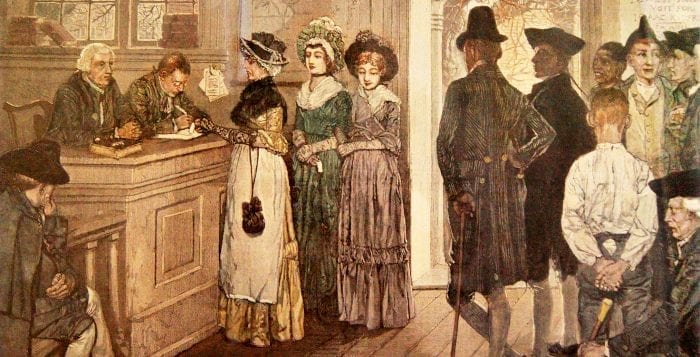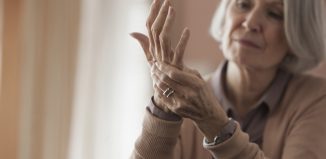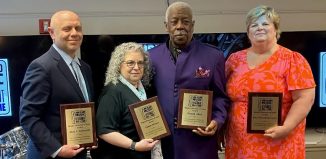Between You and Me: Early Voting Equality for All Women and Men, Regardless of Race
By Leah S. Dunaief

In this year of celebrating a century since women were granted the right to vote with the passage of the 19th Amendment, I will tell you a true tale from the dustbin of history.
Women voted for three decades after the American Revolution. They voted from 1776-1807 alongside men in, of all places, New Jersey. How do I know? Jennifer Schuessler tells me so in the Feb. 24 edition of The New York Times.
The women were only stopped from voting after “rampant fraud and corruption.” For example it seems that some men put on dresses to vote multiple times. New Jersey passed a law then, limiting voting in 1807 to white men.
Was it an early expression of gender equality or a legal loophole that enabled women — and African Americans — to vote at the dawn of our country? Or was that a myth?
The Museum of the American Revolution in Philadelphia located new-found poll lists that show women voted in “significant numbers” before they were denied. In August of this year the museum will open an exhibit called ironically, “When Women Lost the Vote,” featuring those documents. This is a great triumph for the museum and the tale.
While other states limited the vote to “freemen” or male inhabitants, New Jersey gave the right to vote to all “inhabitants” as long as “they” could show they had property worth 50 pounds. That ruled out most married women, whose property or income went to their husbands when they married. However, the law enfranchised many women, regardless of race, in New Jersey — or so the early story went. But where was the proof?
Then, an 1801 poll list from Montgomery Township, found in the New Jersey State Archives in Trenton, was the first real modern-day evidence of numerous women voters. The state archives had acquired the lists in 2016 “from the descendants of a long-ago county clerk.”
Now there are 18 poll lists from four New Jersey townships from 1797-1807 that have been found. Nine of them include 163 unique women’s names. The women had cast about 7.7 percent of total votes. On some lists, it was as much as 14 percent.
An interesting corollary is that the women’s names almost always appear in bunches, suggesting that women came to the polls in groups. Maybe that had something to do with the polls often being located in taverns “awash with drunkenness and guns,” according to The Times.
Philip Mead, chief historian at the Museum of the American Revolution, explained that there was difficulty in determining who met the property requirements, which contributed to the end of gender and race equality in New Jersey.
Still, Mead sees a positive message in this research for the museum’s exhibit: “In early New Jersey, we have women voting and African Americans voting. This is a story both about what we might have been, and about who we’ve become.”
It is a fitting tale to mark the end of Black History Month and the beginning of Women’s History Month.







